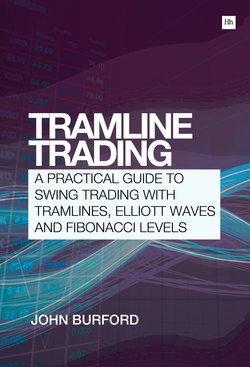Читать книгу Tramline Trading - John Burford - Страница 8
Introduction
ОглавлениеTwo roads diverged in a wood, and I — I took the one less travelled by,
And that has made all the difference.
Robert Frost
There are certain universal chart patterns that markets continue to trace out that have stood the test of time and that can be instantly recognised by a skilled trader. And when you learn how to spot these patterns and understand what they mean, then you have the basis of a solid trading method.
In this book I will show you the patterns which I have found extremely reliable that have helped me develop a complete trading system using only the most basic of elements. I call it the tramline trading method. It is probably one of the easiest methods to master.
I first became a student of charting in the early 1970s, well before the advent of personal computers and electronic trading. To get a market quote I needed to ring my futures broker, there was no way to keep an hourly bar chart updated in real time and I kept my paper charts updated using a pencil. Yes, it was primitive.
But what fascinated me was the fact that by examining patterns on the daily chart, I believed it possible for a reasonably skilled analyst to make a forecast of future price action. And with little or no knowledge of the fundamental supply and demand factors of the market.
The bible of charting then was Edwards and Magee (Technical Analysis of Stock Trends, by Robert D. Edwards and John Magee (CRC Press).) – a doorstop of a book that covered most of the classic patterns. There is a large section in the book devoted to reversal patterns and that was the part that grabbed my attention the most. In fact, because of my interest in reversal patterns, the tramline trading method I developed enables me to focus on trend changes and turning points, although not exclusively.
Early on my imagination was gripped with the possibility that if I could identify a pattern correctly, I could forecast the next likely move and I might also be able to set a price target. That was an exciting prospect. It was exciting because it would enable me to get on board a major trend early in its development before the majority had cottoned on.
But a glance at Edwards and Magee told me that charting could be a very complex area of study. The book lists a vast array of basic patterns with their many variations.
For some years I then retreated from the markets to pursue other business interests. But the siren call of the market was always there in the background. And when I felt I had achieved enough with those other businesses, I set to work on devising a simple method of analysing price charts.
The simple concept of support and resistance lines is something most students of technical analysis learn early on; I believed there could be a method that embodied this concept in a new way. I decided to base a trading method on these support and resistance lines.
That is when the tramline method was born. And since working with it I have incorporated the basic ideas from Fibonacci retracements and Elliott Wave Theory to produce my complete tramline trading method.
My guiding light was to keep the method as simple as possible with no complicated maths, and to employ a minimum of tramlines on any chart. Too many lines and it gets very confusing, which is something to be avoided.
The method presented here is a complete, objective system in itself and is chart-based. Charting being a visual method where we look for recognisable patterns that have repeated time and time again and which help us forecast price movements with high reliability.
I believe that although my methods are simple to learn it is in the application that makes trading them challenging.
Why challenging?
It is the human factor that can make a trader override what the method is telling them. In this book I do not go into the personality hurdles that each trader faces – there are many useful volumes that already address that aspect and I do recommend you to read further on this subject. In fact, as part of my own ongoing development, I still read and study books and articles on personality and how it affects trading.
As you know, trading the financial markets is not for the dabbler or amateur. No successful trader ever takes a punt – that is for the racecourse. We are up against the smartest minds on the planet whose single-minded aim is to take our money away from us. But, with my methods, I believe you can have an edge over your opponents.
If, like me, you believe that simplicity is a means to understanding, then I hope you find some useful ideas within this book.
I have only one golden rule: keep losses small.
If you are successful in that all else follows, because your trading life will likely be a long one.
